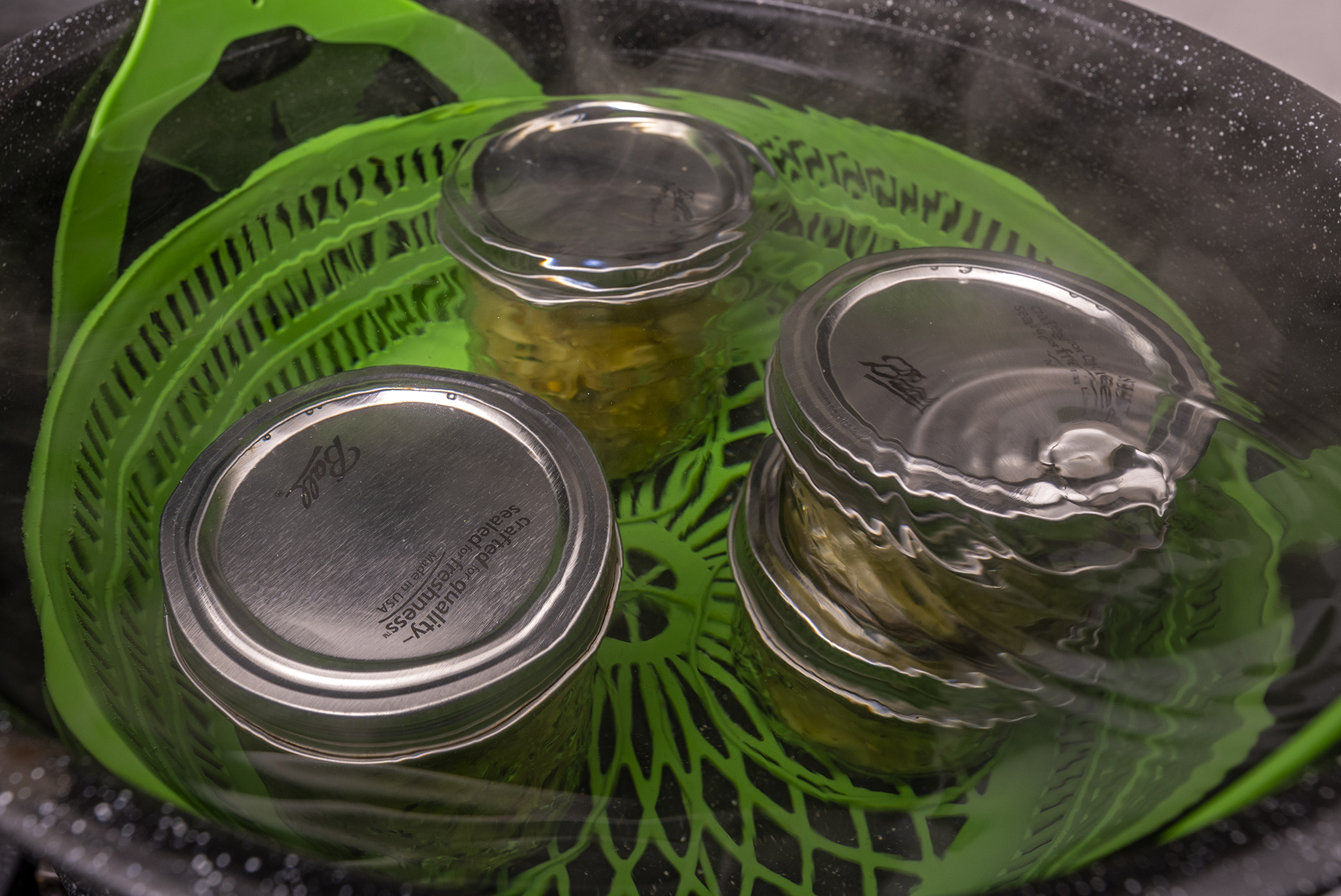While canning and preserving may seem like more of a food topic than a gardening topic, isn’t your organic vegetable garden pretty much a backyard produce department for your kitchen? Every year, I’m saddened when I have to put my garden to bed and then add tomatoes, herbs and cucumbers to my grocery list. Yes, I’m grateful for access to fresh produce year-round in this modern age, but I still want to extend my growing season and have my own home-grown delicious produce for a full 12 months. The next best thing is quite possibly food preservation.
>> Canning
The first method that typically comes to mind when talking about preserving is canning. For me, canning conjures up memories of picking bulbous, juicy blackberries one sultry Texas summer and sweating over the stove to produce a handful of jars filled with smooth, rich blackberry jelly. But there’s a whole world out there of canning recipes for pickles, sauces, salads, meats, condiments, and so much more.
In the late 1700’s, French chef, distiller and inventor, Nicholas Appert, developed a hermetically sealed food preservation method for Napoleon’s army using glass jars and paraffin wax. Not too long after, tin cans became preferable to glass, and the first commercial cannery opened in 1912. In 1858, John Mason invented the threaded, screw-on lid and jar we know today, making canning safer for every home canner everywhere. And Louis Pasteur helped us understand what makes food spoil and how we can decelerate that process.
Today, it’s so easy and convenient to grab cans and jars off grocery store shelves, and commercial canning has dramatically increased the access to food across the world. But, the practice and knowledge of home canning, even with gardeners, has dwindled. You might even find the concept intimidating. Yes, there’s always the possibility of food-borne illnesses, but it’s not as scary as you think. Make the USDA’s Complete Guide to Home Canning your go-to manual, get your pressure canner tested annually, and you’ll be well on your way to becoming a pro.
Whether water-bath canning acidified recipes or pressure canning low-acid foods, canning is worth the time, sweat and jars to enjoy the best of your produce throughout the winter.

>> Freezing
If you have the freezer space, freezing produce can be the simplest way to preserve your garden foods. You don’t need any fancy equipment, and it’s easy to store, access and use. Frozen fruits and veggies don’t last as long as canned, but if done right, they can taste fresher and more flavor-full. Freezing can also release juices that are difficult to extract. For example, frozen berries in smoothies or tomatoes in sauces.
Maybe frozen for you tastes like freezer burn or mush. Here’s my advice for avoiding these and effectively freezing produce:
1. Separate and open-air freeze whole, dry pieces first. For example, brush your berries free of debris instead of rinsing them. Spread them out on a lined baking sheet so that they’re not touching. Freeze uncovered until solid. You can also freeze whole tomatoes and cubes of cucumbers.
2. Store in freezer-specific bags with as much air removed as possible. Store in portions to reduce the amount of air that gets into the bags over time.
>> Drying
Whether you have a dehydrator or just your oven, drying foods significantly extends their life, usefulness and flavor. Herbs have a very short shelf life unless dried. Dried citrus slices are so distilled in flavor, they can be ground and used in small doses to add acidity to recipes. Dehydrating fruit concentrates natural sugars, producing sweet snacks. Drying garlic on warm in a crock pot for three weeks will give you black garlic, an antioxidant-rich culinary delight that will enhance the flavor of your recipes in ways you have never imagined. N
Story by Michal Bennett
Photogrpahy by Joel Riner



